Crypto Craze
How India is catching up with the possibilities of the newest money
 V Shoba and Ullekh NP
V Shoba and Ullekh NP
 V Shoba and Ullekh NP
|
18 Jun, 2021
V Shoba and Ullekh NP
|
18 Jun, 2021
/wp-content/uploads/2021/06/Crypto1.jpg)
(Illustration: Saurabh Singh)
IT IS 1 AM in Belgrade, Serbia, 3.30 hours behind Indian Standard Time. Sandeep Nailwal is at work, but he apologises for calling at this hour. “Working in crypto warps your sense of time and returns from the market. It is almost unhealthy. We have only been around for three years but it feels like two decades,” says the 33-year-old co-founder and COO of Polygon, formerly the Matic Network, an Indian-origin blockchain project that enables faster and cheaper transactions on Ethereum, the second largest platform after Bitcoin in the $2.3 trillion cryptocurrency market.
A blockchain is a decentralised database of all transactions across a peer-to-peer network, where the intermediary, traditionally a bank, is replaced by multiple verification nodes on the network. Think of it as a city built and run by the people. In a recent appearance on comic Tanmay Bhat’s YouTube show on cryptocurrency co-hosted with Akshay BD, a founding member of Uber India, the Polygon founders described the Ethereum network as a perpetually clogged highway and Polygon’s “side-chains” as parallel lanes that can route and manage some of the traffic. Why is this important? On the Ethereum network, conducting a transaction involves allocating computing resources for validation, and this entails paying a “gas fee”. Priced in small fractions of the network’s currency ether (ETH), the gas fee on the network has dropped from $45 per transaction a month ago to about $4.5—a six-month low. This is partly because the number of transactions diverted from Ethereum to the Polygon network has zoomed—to nearly 7.5 million a day, which is over five times the number of daily Ethereum transactions. Polygon is making Ethereum cheaper, faster and more accessible by sending transactions off the main chain, validating them and then settling the total value on the main Ethereum blockchain, and for delivering this service, it is being richly rewarded. Billionaire angel investor Mark Cuban recently invested an undisclosed sum in the company. In March, the Nasdaq-listed cryptocurrency exchange Coinbase allowed users to trade the Polygon coin, which is now among the top 20 cryptocurrencies. The fully diluted market map of Polygon stands at $15 billion at the time of writing, with a circulating market cap of $7.8 billion—making them the first Indian crypto unicorn several times over.
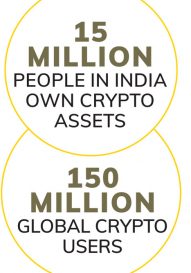
At a time when more and more Indians are adding laser eyes to their Twitter profiles—to signal they are bullish on crypto—Polygon’s story is worth telling for inspiration value alone. Founded in 2018 by three Indian non-IIT software engineers, Jaynti Kanani, Nailwal and Anurag Arjun, with Mihailo Bjelic from Serbia later added as a co-founder, the Polygon team now supports over 300 blockchain projects, including some of the hottest decentralised finance (DeFi) apps (sophisticated lending, borrowing, and prediction applications usually built on Ethereum to leverage its ability to deploy “smart contracts”, which automatically execute transactions if certain conditions are met) and non-fungible tokens (creating an NFT involves generating a unique serial number for an object of value such as a work of art that then lives on forever on a public blockchain). “The world is surprised at how fast we are going. Today, we saw Ernst and Young integrate Polygon into their blockchain practice—these are moments that tell us we have broken into the mainstream,” says Nailwal. When Twitter CEO Jack Dorsey offered his first tweet for sale in March this year as an NFT—it sold for 1,630.58 ETH, or about $2.9 million based on ether’s price at the time of sale—the transaction was hosted on the Polygon network.
Even as we debate the legality of cryptocurrencies, the network effects of blockchains that operate outside the world of finance have begun to surround us in ways we cannot yet fully fathom. The Maharashtra government’s Disaster Management Department deployed a private blockchain in partnership with a startup, Print2Block, to issue Covid-19 test certificates. That blockchain is built on the Matic Network. So is Guhaar, an app for citizens’ grievance redress launched by the Bastar District Administration, Government of Chhattisgarh. “People may begin interacting with blockchain technology for speculation, but gradually, its use cases and applications will become part of day-to-day life. When electric cars become popular in India, they will be able to charge and pay for it themselves at solar charging stations that will tokenise the energy. The refrigerator at your home will automatically refill its stock and pay for it through its wallet. Small and medium businesses will be able to borrow directly from their wallets by uploading their receivables or invoices to get access to capital. Remittances will be processed at very low cost. All this will be powered by blockchain technology with cryptocurrencies at its core,” says Atul Khekade, a crypto entrepreneur who in 2017 founded XinFin Network (XDC), a cryptocurrency that in the past year has grown by over 1,300 per cent. He was not always a believer. When Khekade was offered Bitcoin as consulting fee in 2013 by a payments company in lieu of a cheque, he didn’t think twice before rejecting it. He wanted real money for his hard work. But then, six months later, having realised his blunder, he took the next fee settlement in Bitcoin. “I sold them immediately to get instant fiat money,” recalls Khekade, 40, who is also the author of a fictional self-help book, Me Ki Gai: A Young Man’s Journey discovering his Ikigai, Love, Happiness and Riches (2020). “The concept of an inflation-proof, decentralised currency that could work with other fiat currencies of the world immediately appealed to me.”
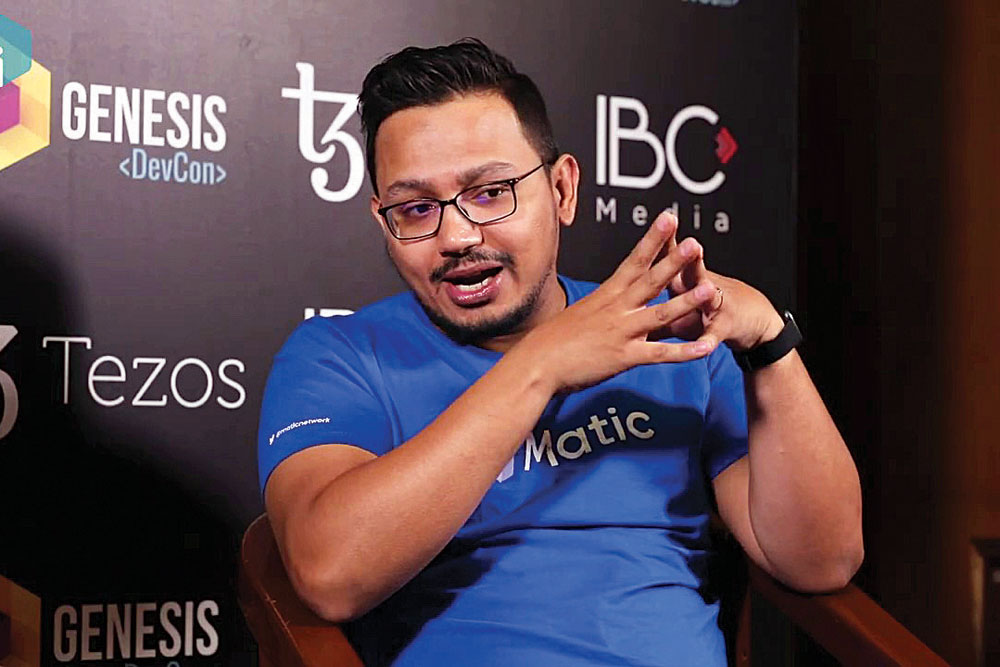
In April 2021, Nailwal brought the crypto community together to create a fund for Covid relief in India, drawing generous donations from leading global crypto entrepreneurs like Balaji Srinivasan, former CTO of Coinbase, and Vitalik Buterin, the 27-year-old founder of Ethereum. In one of the largest individual philanthropic efforts during the second wave, Buterin last month donated 500 ETH and over 50 trillion Shiba Inu (SHIB)—a meme coin created in August 2020 with no real utility besides being a transferable token—together worth around $1.14 billion to the fund. (The price of the Shiba Inu token fell by about 40 per cent in response.) A fundraiser that would have taken weeks, perhaps months, and involved multiple government agencies and banks, took but a few hours. This here is the true decentralised power of cryptocurrency, first imagined by a man who called himself Satoshi Nakamoto, and released a white paper in 2008 sketching out a financial system for digital payments that had no trusted third party operating it. The Bitcoin protocol was born, with no company or individual running or controlling the blockchain infrastructure, which would be maintained by a network of “miners” whose computers performed complex calculations to validate each transaction and prevent double-spending. Miners earn rewards in the form of freshly issued Bitcoin but the pace of creation is limited, and no more than 21 million will ever be issued.
Cryptocurrency is not a technology; it is a shift in how we organise. Every participant can play an active role in running a transparent and immutable financial system with no borders, says Sandeep Nailwal, Cofounder, Polygon
REGULATING CRYPTO ASSETS
Crypto assets are different from legacy digital payment methods like those of Visa, and newer fintech solutions like PayTM and GooglePay, in that they remove all middlemen from transactions. “This whole revolution is picking up mainstream heat now,” says Nailwal. “Cryptocurrency is not a technology; it is a fundamental shift in how we organise. For the first time, every participant can play an active role in running a transparent and immutable financial system that has no borders. Ideology aside, product market fits are here now, with Bitcoin set to become a treasury reserve for many countries and Wall Street embracing DeFi as the next big frontier.”
While digital assets have become ubiquitous worldwide—the tiny Central American nation of El Salvador has gone to the extent of making Bitcoin, a token that continues to fluctuate wildly, legal tender—India continues to grapple with regulating the nascent technology and recognising it as an asset class, as many other countries do. Indian authorities, unlike those in Japan and South Korea, where a study during the crypto boom of 2017 found that over a third of its workers invested in cryptocurrencies, are still watching the scene closely although indications are that they will regulate and not ban them.
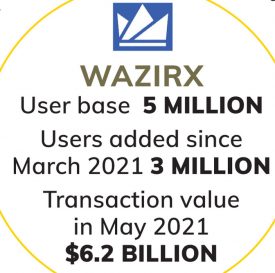
The concerns weighing on regulators include high asset volatility, weak or no investor protection, a possible decline in profits that government makes from minting money, cryptocurrency’s potential to undermine the authority of central banks, and its role in enabling ransomware threats, scams and other illicit activities. While cryptocurrency as a harbinger of a future in which the state has less agency is still a distant thought, ransomware is a clear, present but not insurmountable danger. The Federal Bureau of Investigation (FBI), for instance, recently breached a crypto wallet held by hackers who had attacked the American oil pipeline company Colonial Pipeline by following the money trail on Bitcoin’s blockchain, and broke the myth that cyber criminals transacting in cryptocurrency would remain protected from scrutiny.

The Supreme Court’s verdict on March 4th, 2020, overturning the Reserve Bank of India’s (RBI) 2018 ban on banks from facilitating cryptocurrency transactions, came as the shot in the arm the Indian crypto community had been waiting for. “Crypto has won in India. We won!” exclaimed Nischal Shetty, founder of WazirX, on Twitter. WazirX had just launched a cryptocurrency marketplace when RBI imposed the ban. CoinDCX was about to launch. The two exchanges pivoted to a peer-to-peer model overnight while also coming together to challenge RBI’s decision in the Supreme Court. “Some exchanges were shutting down, but some of us decided to stay and grow the crypto ecosystem because we strongly believed in it. The #Indiawantscrypto campaign, which saw people tweeting about how India could benefit from crypto, rallied the community against a possible ban. I am glad all these efforts haven’t been in vain,” says Shetty, whose exchange is the largest in India today, with over five million customers. “It took us three years to reach two million customers, but since then, we have signed up more people than we had in the last three years. This growth is on par with global trends and reflects the cycle of adoption in the US industry back in 2017,” Shetty says. Last month alone, WazirX processed trades worth $6.2 billion.
The average Wazirx user is between 22 and 30. This generation does not have an affinity for real-world assets. They ask: should I spend or put the money in bitcoin? Since most of their world is online, the crypto asset category appeals to them the most, says Nischal Shetty, Cofounder and CEO, Wazirx
RBI recently confirmed that following the Supreme Court verdict of 2020 banks cannot quote its 2018 circular banning them from transacting with entities that deal in cryptocurrencies. Positive global cues, including Tesla’s announcement that it had acquired $1.5 billion worth of Bitcoin and the Coinbase IPO, have further turned Indians from nocoiners to altcoiners (altcoins are tokens other than Bitcoin) in a short span of time. But what hobbles Indian regulators is the absence of a law to regulate cryptocurrency. Open spoke to a source close to the matter who said, “As of now, no regulator can proceed with plans to legalise cryptocurrencies and any report suggesting this is false. Besides, RBI only said that banks cannot quote the circular struck down by the Supreme Court. Bear in mind, the absence of law doesn’t make anything legal.”
A VOLATILE MARKET
The lack of regulatory clarity hasn’t stopped Indians from running exchanges, buying their first virtual tokens and treasure hunting in the cryptoverse. A 42-year-old Indian crypto trader based in Berlin, who goes by the nom de plume Ray the Wanderer, embraced cryptocurrency out of sheer necessity. That his German was poor meant he could not land a job, and he needed to earn a living in a foreign city. Could investing in crypto assets be the answer? A former hospitality executive, Ray borrowed €7,000 from his wife, of which he was left with just €1,800 after making a series of ‘mistakes’. Finally, in mid-2020, he got his act together. In the past year, he has become a euro millionaire—he says his savings could touch €10 million in the next few months. “Without proper research into who backs which currency and a broad picture of how things work, you always tend to make mistakes and lose money,” he says on a phone call from the German capital. Many fortune hunters have far surpassed their savings goals while others have watched helplessly as their money fell off a cliff. “I just found out that one of my colleagues borrowed Rs 20 lakh to buy Dogecoin. We all know what he is in for,” says Rachana Ranade, a 35-year-old chartered accountant and YouTuber with 2.57 million subscribers. There are only two introductory videos on cryptocurrency amidst the plethora of content on the stock market and investing on her channel. “I tell my viewers they should treat crypto investments like a party fund. If you were going out with friends, you’d be willing to spend Rs 2,000-3,000—imagine that money is gone, and invest only that much in crypto if you don’t want to lose your sleep over it,” she says. While much of her audience usually falls in the 25-34 age bracket, for crypto videos, viewership is led by 18-24-year-olds, she says. “There is interest even among teenagers. For example, my first video on crypto was viewed over a million times, out of which 1.5 per cent views came from users aged 13-17. The value of educating young investors in this new asset class cannot be overstated.”
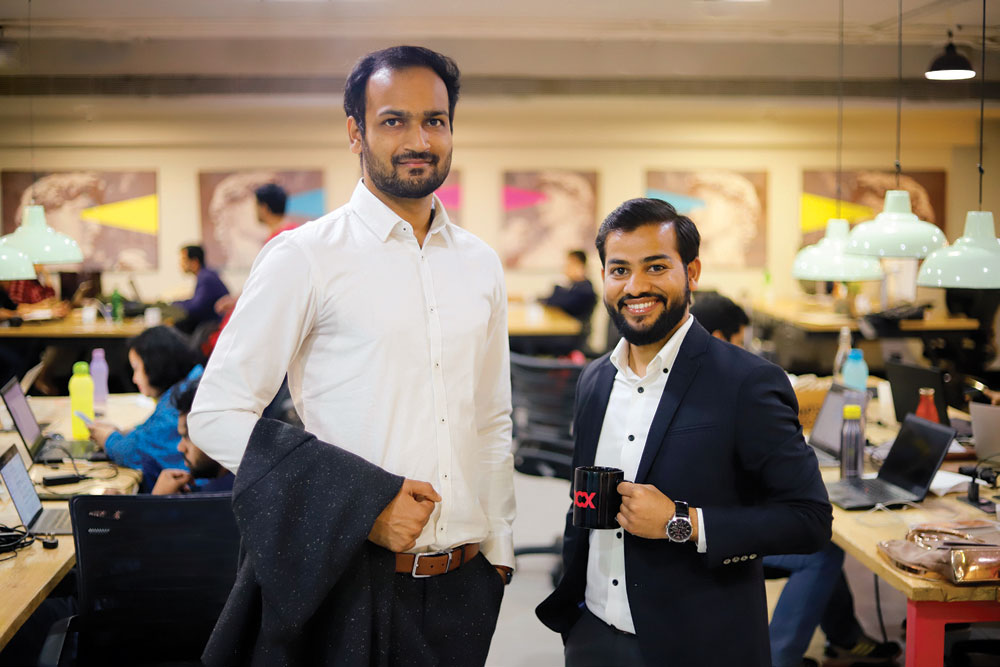
“The average WazirX user is between 22 and 30 years old. This generation does not have an affinity for owning real-world assets—many of them have houses that their parents worked hard to acquire. So the question this generation is asking is: Should I spend or put the money in Bitcoin? Since most of their world is already online, the crypto asset category appeals to them the most,” says Nischal Shetty. Many coins with no intrinsic purpose, such as Dogecoin and Shiba Inu, are highly speculative assets, sometimes witnessing 20-30 per cent volatility within a single day. When WazirX rapid-listed Shiba Inu by designating a few market makers to have liquidity of the token, with other users only authorised to buy from or sell to them, the price of the token shot up several hundred times and traders lost money. “We underestimated the demand,” Shetty says. “It made us realise how fast and how big the market was becoming. We compensated the affected and we have since brought in changes to the way we list new coins.”
Mass adoption of crypto is round the corner but one of the main barriers today is the government’s reluctance to establish a solid regulatory framework, says Sumit Gupta, Cofounder and CEO, Coindcx
Bitcoin, which traded at $350 until 2013, the year it first crossed $1,000, and went on to touch nearly $20,000 in 2017 before crashing to $3,300 in December 2018, once again lost a big chunk of its value since the April 2021 peak of nearly $65,000 before bouncing back recently. Neither Bitcoin nor ether is immune to swings and this is why, late in May, HSBC, Europe’s largest investment bank, said it has no plans to offer digital tokens as investments. The demand for digital tokens is also closely tied to the often-irresponsible actions of influencers like Elon Musk, whose one tweet is enough to spark a bull run lasting weeks. Such short-term volatility has made “HODL”, “hold” misspelled by a Bitcoin trader on an online forum in 2013, the mantra for early investors. But as new investors test the waters, and are drawn in by the meme value and the low denominations of altcoins, exchanges are increasingly pushed to list more coins to rope them in. Bitcoin’s share in the crypto market is slowly falling—from making up more than 90 per cent in 2017, it is down to about 40 per cent today despite its value surging beyond all predictions—and other coins, including those with no obvious utility, are gaining in value.
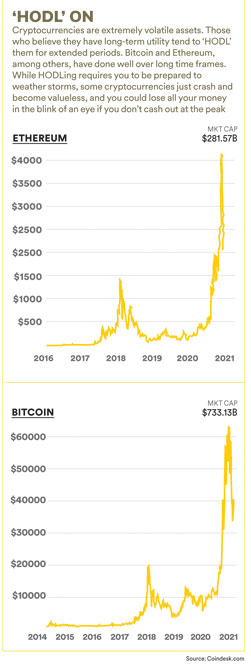
“I have made enemies among friends and family by telling them not to buy Dogecoin,” says 28-year-old Mohak Agarwal, who runs Claystack, a crypto staking platform. Staking involves locking up a crypto asset to be used for validating transactions on a proof-of-stake blockchain. In a “proof-of-work” (PoW) network such as Bitcoin, mining, or solving ridiculously hard mathematical problems in order to be the first to complete a block of transactions, is an energy-intensive process. The Ethereum community is working on building Ethereum 2.0 that will run a “proof-of-stake” (PoS) consensus algorithm to securely verify transactions on the blockchain. Unlike miners, PoS ‘validators’ dedicate their cryptocurrency—at least 32 ETH—for a chance to verify transactions in a block. “Staking is actually like an FD, only better, because to stake, you don’t have to define your lock-in period beforehand. Besides the appreciation in the price of the asset itself, you also receive passive income. Most networks offer between 7 and 11 per cent rewards, with Polygon offering among the highest. As more people stake an asset, the rewards decline,” Agarwal explains. Currently, over $200 billion of cryptocurrency is being staked across networks.
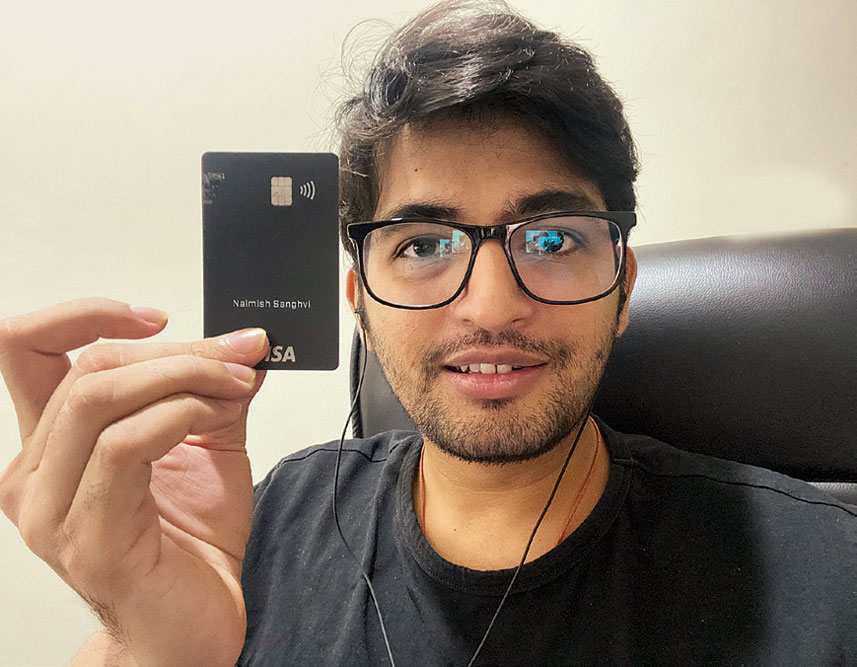
“Wild valuations are only a blip in the long and continuous cycle of crypto,” argues Shetty. “There are 150 million users in crypto globally, which is less than 3 per cent of the internet population. If this is the value at such low levels of penetration, imagine the massive value that all the potential users can unlock.” WazirX, which has also used its own token WRX to drive user growth by offering discounts on fees on its platform, was acquired by Binance, the world’s biggest exchange by trading volume, in late 2019. The association with a Chinese-owned company has now landed WazirX on the wrong side of the geopolitical debate on technology in India. Last week, the Enforcement Directorate announced that it had served a showcause notice to the directors of WazirX for contravention of FEMA (Foreign Exchange Management Act, 1999), involving cryptocurrency transactions worth Rs 2,790.74 crore. While Shetty denied receiving the notice and said that the exchange adheres to all KYC protocols, the agency said it was probing a case of money laundering to the tune of Rs 57 crore where Chinese nationals had converted INR deposits into the cryptocurrency Tether (USDT) through the WazirX-Binance system. “Every technology has side effects. The internet as a technology enabled anonymous communication, but if India had stopped the software revolution in its tracks, it would have resulted in massive brain drain. We are hopeful that with crypto, too, India will not miss the bus now, or it will be too late to create a crypto silicon valley,” Shetty says. Take Khekade, for instance, who is from Mumbai, but moved to Singapore to start up. “The reason we chose to set up XinFin in Singapore is the support and encouragement we have received from regulators in Singapore,” he says.
Crypto has become a get-rich-quick scheme for new investors. And while the market is booming, a lot of simple issues can be resolved with better and faster communication, says Naimish Sanghvi, CEO, Coin Crunch India
HOW FAR ARE WE FROM CRITICAL MASS?
For CoinDCX, which has 38 coins listed for trading on its investment app CoinDCX Go, while customer acquisition will continue to be the flavour of the season, scaling up its infrastructure by adding many third-party OTP providers to distribute the load on peak traffic days, resolving tickets without delay, and enhancing security are priority. According to the company, over 30 per cent of its users trade in more than three tokens—a sign of the growing sophistication in the Indian crypto market. With 153 employees—five times the number six months ago—and as many consultants, the exchange has been running multilingual ad campaigns such as #BitcoinLiyaKya to educate and onboard more users, especially from Tier 2 and Tier 3 cities. When we call Sumit Gupta, cofounder and CEO of CoinDCX, he is on a field trip and his voice keeps cutting out on the tenuous network. There are no rural-urban gaps in infrastructure or information when it comes to crypto, he says. “Mass adoption of crypto is round the corner but one of the main barriers today is the Government’s reluctance to establish a solid regulatory framework,” says Gupta. “There are misguided fears around crypto which need to be addressed. But at the same time, there is also growing public interest that is putting pressure on the Government to bring positive regulation. We need to educate the people and the regulators and that’s the way forward.” The IIT Bombay alumnus says he first realised the disruptive potential of crypto upon returning to India after working as a software engineer for Sony in Tokyo: “This was 2016 and we sat up all night in our flat in Indiranagar, Bangalore, discussing crypto. Neeraj (his longtime friend and cofounder Neeraj Khandelwal) and I wanted in on this powerful, revolutionary technology. We started coding from scratch in 2017 and we lined up a few investors, but they promptly disappeared when the RBI ban came. We exhausted our savings; Neeraj took a loan from his family, and we launched the exchange despite the RBI ban, which caused volumes to fall to a 150th in the following months.”

In 2019, despite regulatory uncertainties, when CoinDCX raised seed funding from Bain Capital, it infused the team with fresh commitment to work towards improving crypto adoption in India, Gupta says. “India, with its strong base of engineers and developers, has a lot of potential to build multiple-billion-dollar companies in the crypto space,” he adds. CoinDCX raised Series A funding soon after the RBI ban was lifted, and amid exponential growth during the pandemic, has also raised Series B from the likes of Block.one, Jump Capital, Coinbase Ventures and Polychain Capital.
The thick glass wall between regulators and people who face the regulation is yet to be broken, says Sathvik Vishwanath, Cofounder, Unocoin
“Indians have been gambling through the pandemic,” says Naimish Sanghvi, CEO of Coin Crunch India, a crypto information and reviews website and consultancy that runs a community Telegram group and a YouTube channel. “Crypto has become a get-rich-quick-scheme for new investors who are yet to see a bear run. And while the market is booming, exchanges are focused on making money even as a lot of simple issues—when a deposit is stuck, for example—can be resolved with better and faster communication. Customer support has not kept up with growth.” Exchanges should also invest in security infrastructure to guard against possible hacks and attacks, he says. Last year, cryptocurrency wallet and exchange platform BuyUcoin suffered data leaks thrice, compromising the information of over 300,000 users. In 2018, Coinsecure, an early crypto exchange, had got hacked and Bitcoins worth Rs 19 crore went missing in what the company later revealed to be an insider job. Then there were the multi-level-marketing schemes. GainBitcoin founder Amit Bhardwaj had peddled a Bitcoin-based scheme and swindled over 8,000 people out of at least $300 million; he was arrested and booked but got away easy after securing interim bail on health grounds. Meanwhile, another largescale Bitcoin scam, worth anywhere between $726 million and $12.7 billion, had gone down in Gujarat. It was executed by Divyesh Darji, the Asia head of UK-based crypto firm Bitconnect, through its India platform launched immediately after demonetisation. The Bitconnect Coin was promoted widely and promised investors 60 per cent monthly interest and incentives. It was a worldwide scam and led to a US court ordering a freeze on Bitconnect’s assets in the country. The threat of MLM schemes hitching a ride on the crypto rollercoaster is non-zero even today.
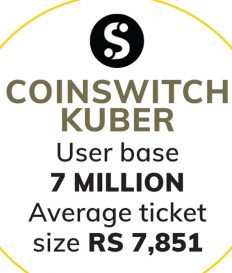
“Aside from external hacks and threats, it is hard enough to run an exchange because of the unreliability of banks, KYC providers and third party vendors—you are constantly playing a catch-up game. On the technical side, the smallest mistake in the code could result in a loss of crores,” says Sathvik Vishwanath, co-founder of Unocoin, the first exchange to launch in India in 2013. He recalls that in 2016, the exchange had to write off 10 Bitcoin—“Today it would be half our payroll,” he says. Unocoin claims a user base of 1.4 million now—up from 1 million in 2018. Vishwanath and a few early believers in crypto organised meetups in Bengaluru and Mumbai between 2013 and 2017. The Bengaluru meetups were held every weekend, usually at a cafe or a hotel, and on occasion, the crowd would swell to over 150, a mini-conference that the venue would be reluctant to host. “A lot has changed since then, but the thick glass wall between regulators and people who face the regulation is yet to be broken,” Vishwanath says. Before the RBI ban, Unocoin had onboarded over 2,000 merchants, including bookstores and cafes, in an effort to promote cryptocurrencies as modes of payment. “The future of crypto, it is now clear, is solely as an asset class. In any case, fees on transactions in blockchains have skyrocketed and for micropayments below Rs 10,000, crypto payments do not make sense,” Vishwanath says. Unocoin’s systematic buying plan, where you can set aside a small sum of money every month to buy crypto assets—Rs 3,000 being the sweet spot, he says—is still popular with thousands of users who have been transacting on the platform since before the ban. The company has just launched a lending and borrowing platform where users can take loans against crypto assets.
“Although we see a lot of traction in Delhi, Kolkata and Pune, over 60 per cent of our users come from Tier 2 and Tier 3 towns where there are not enough opportunities to create wealth. The average ticket size is Rs 7,851,” says Sharan Nair, chief business officer at CoinSwitch Kuber, an exchange that claims to have seven million registered users. Founded in 2017 by Ashish Singhal, Govind Soni and Vimal Sagar Tiwari as a global aggregator of cryptocurrency exchanges, the company launched its Indian crypto platform, CoinSwitch Kuber, in June 2020 to simplify crypto investments for retail investors. Nair had joined Unocoin fresh out of college and remembers being “kicked out of places for evangelising Bitcoin because it was something people used for drugs and porn”. While the market has grown several times over, some of these misconceptions about crypto remain, he says. The company has collaborated with The Viral Fever to produce a sketch to debunk crypto myths. It has also witnessed a 4x surge in registrations after its ‘Trade kar, befikar’ IPL campaign. “Customer education and protection are the two things we can never lose sight of. If something goes wrong and you lose your crypto assets, no law of the land can protect you,” Nair says.
BUILDING FOR THE FUTURE
It is extremely hard to find a developer to build on Solidity, a programming language for writing smart contracts on blockchains like Ethereum, says Nailwal. “The demand supply ratio is 10:1. The ones who are good are paid in dollars, and tend to draw a starting salary of $30,000-40,000, and $80,000-100,000 if it’s an international company. For a cutting edge tech company like us—we are a team of 80, spread across the world—we have to create much of the talent. We hold a lot of hackathons and hire people who attend multiple times as interns.”
Nailwal has no doubt India will become the decentralised app factory of the world in two-to-three years: “There aren’t many protocol developers yet, but I hope to see India pioneer real world use cases in agriculture, insurance, etcetera.”
Harsh Rajat, the 34-year-old founder of Ethereum Push Notification Service (EPNS), a protocol that helps subscribers and users to receive notifications on cryptocurrencies, leads a rare effort from India to build a technology solution for the emerging ecosystem. Currently, it is expanding its protocol with the aim of reducing network congestion and to offer services to all its users, not just subscribers. Allahabad-born Rajat has invested and lost money in cryptocurrency in the past. It isn’t trading that draws him to crypto but the technology behind it. After a series of web-based jobs in Mumbai, he entered the world of blockchain technology in 2018. “No alternative to blockchain is likely to emerge in the near term, but with technology, one can never tell,” he says.
Crypto entrepreneurs like Rajat hope to help put more money in the hands of people and to play a crucial role in the economy of the future, but with large swathes of India’s population still illiterate and without access to digital resources, the mainstreaming of India’s cryptocurrency network can only happen as slowly or as fast as its investment in education and digital literacy.

/wp-content/uploads/2025/07/Cover_Dalai-Lama.jpg)












More Columns
From Entertainment to Baiting Scammers, The Journey of Two YouTubers Madhavankutty Pillai
Siddaramaiah Suggests Vaccine Link in Hassan Deaths, Scientists Push Back Open
‘We build from scratch according to our clients’ requirements and that is the true sense of Make-in-India which we are trying to follow’ Moinak Mitra